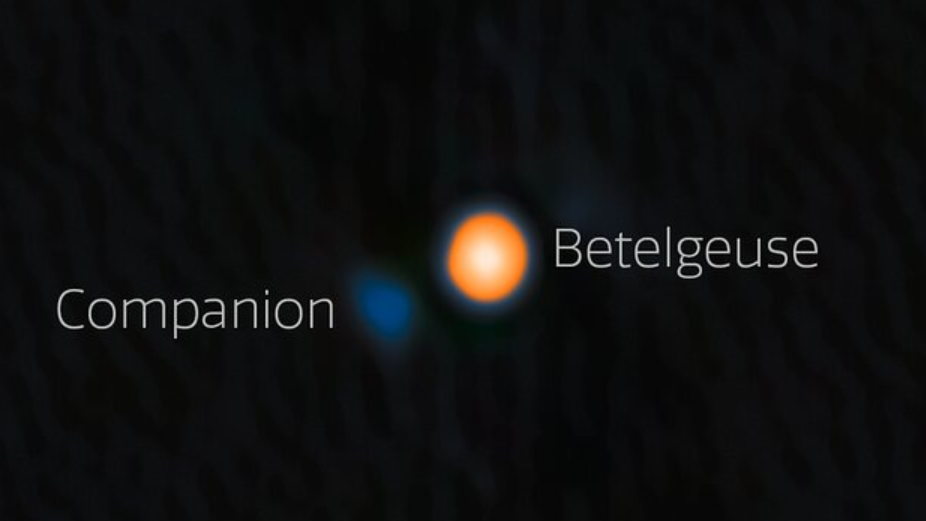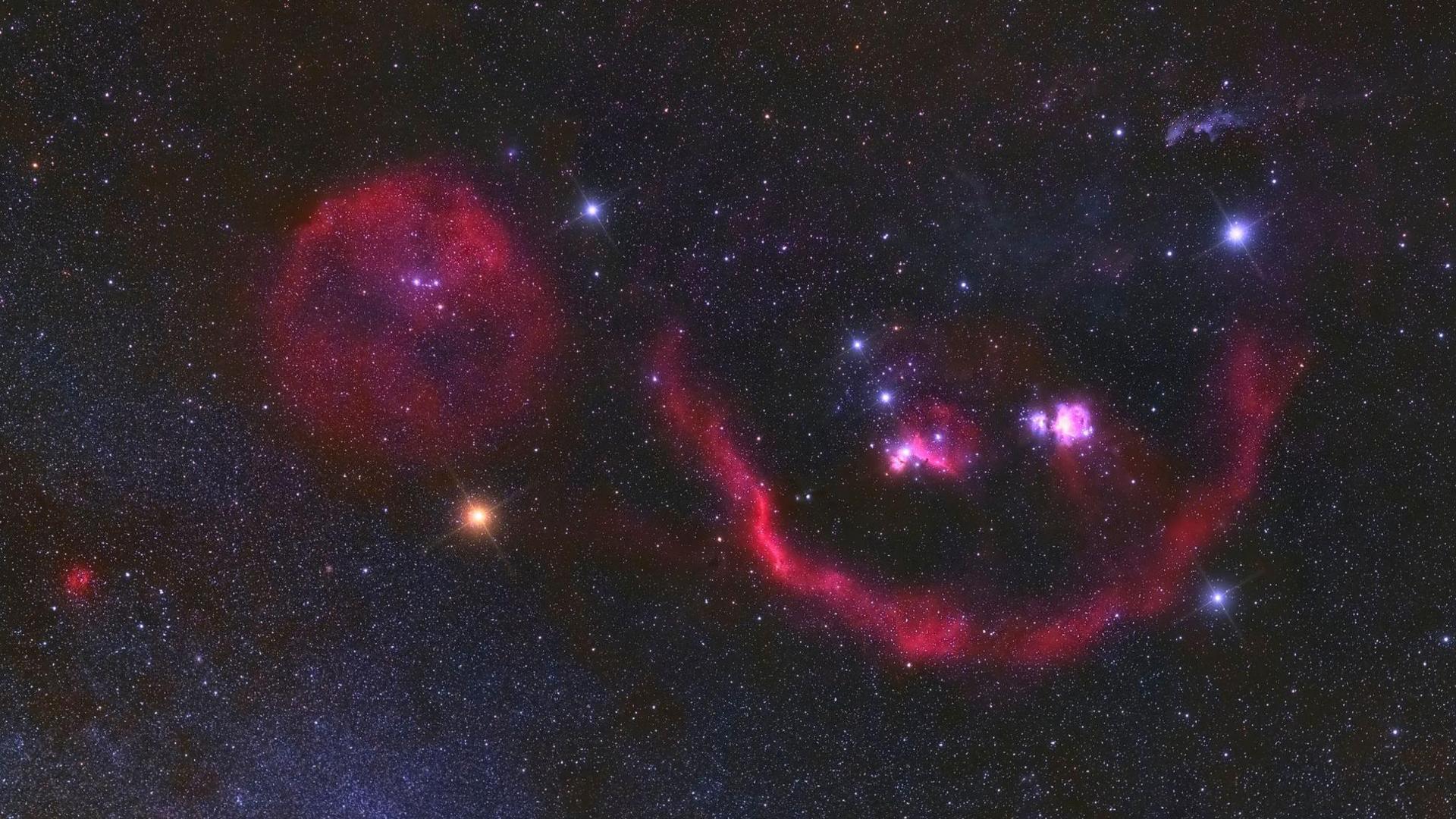Scientists discover why Betelguese changes brightness

- Published
Astronomers say they have confirmed why Betelgeuse, one of the night sky's most dazzling stars, regularly changes brightness.
For the first time, they have discovered a much smaller companion star that is orbiting the red supergiant.
According to new research, this 'little buddy' has a mass around 1.5 times greater than our Sun.
Experts say its passage across Betelgeuse's face causes a 400 day cycle of dimming, as well as another one that lasts for nearly six years.
More space news
Earth spinning faster makes today one of the shortest on record
- Published21 July
Scientists spot start of a new solar system for first time
- Published17 July
What have experts discovered?

Betelgeuse is more than 10,000 times brighter than our Sun, and as a result, its blinding light makes spotting anything nearby difficult.
Experts say that they long suspected that Betelgeuse might have a star nearby and are delighted with the new findings.
Scientists turned to the the Gemini North telescope in Hawaii to prove their theories.
Using a technique called speckle imaging, they put together many images to overcome issues that Earth's atmosphere causes telescopes that are based on the ground.
Steve Howell, a NASA scientist who led the research team, said: "Previous papers that predicted Betelgeuse's companion believed that no one would likely ever be able to image it."
The companion star is around four times the distance from Betelgeuse as the Earth is from the Sun.
According to the US research centre NOIRLab, which operates the Gemini Observatory, the discovery is the first time such a close companion star has been detected orbiting a supergiant.
What is Betelgeuse?

According to the International Gemini Observatory, Betelgeuse is one of the brightest stars in the night sky, and the closest red supergiant to Earth.
Located in the constellation of Orion, people have observed Betelgeuse with the naked eye for thousands of years.
It has a huge volume, and is around 1,000 times bigger than our Sun.
It's thought to only be 10-million-years-old, however, due to its large mass it has evolved quickly and is late in its life.
